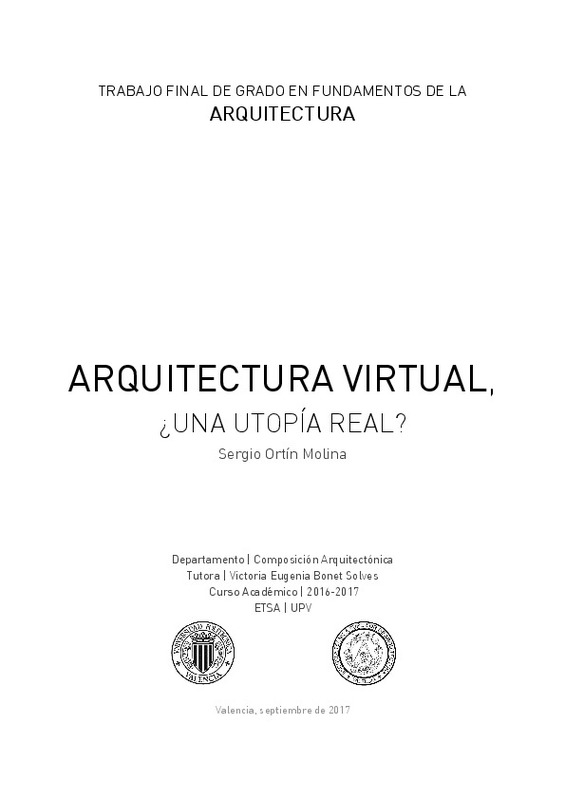|
Resumen:
|
[ES] Con el paso de los siglos, la arquitectura ha evolucionado teniendo que adaptarse a las circunstancias de un mundo que avanzaba cada vez más rápido. En la actualidad se vive un momento tecnológico cuyo desarrollo, sin ...[+]
[ES] Con el paso de los siglos, la arquitectura ha evolucionado teniendo que adaptarse a las circunstancias de un mundo que avanzaba cada vez más rápido. En la actualidad se vive un momento tecnológico cuyo desarrollo, sin precedentes, está expandiendo los límites mismos de la imaginación al hacer posibles objetivos que parecían meras ilusiones. En este contexto, se pretende entender de qué modo la arquitectura está involucrándose en el nuevo paradigma de lo digital, contribuyendo el presente trabajo a fomentar esa metamorfosis del arquetipo de la disciplina. El anhelo por idear el diseño del futuro ha llevado a arquitectos de todas las épocas a tratar de adelantarse a su tiempo con proyectos que nunca fueron más allá de los trazos del grafito sobre el papel debido, en muchas ocasiones, a una tecnología todavía insuficiente. En este aspecto, todo sugiere que no será el límite. Esta misma idea queda reflejada a lo largo del trabajo, pues la aplicación de la realidad virtual a la materia de estudio se intuye fundamental para que la disciplina aprenda a convivir con el mundo digital del presente, cuyo potencial se vislumbra difícil de acotar. Cuando esta arquitectura de la que se habla pueda llevarse a cabo con todas sus implicaciones, cruzaría sin retorno la delgada línea que hoy en día aún separa la utopía de la realidad.
[-]
[EN] Over the centuries, Architecture has evolved having to adapt to the circumstances of an everyday changing world which progresses faster and faster. Nowadays, we live a technological moment whose unprecedented development ...[+]
[EN] Over the centuries, Architecture has evolved having to adapt to the circumstances of an everyday changing world which progresses faster and faster. Nowadays, we live a technological moment whose unprecedented development is expanding the very limits of the imagination by making possible objectives which seemed mere illusions before. In this context, the aim is to understand how architecture is getting involved in the new paradigm of the digital, contributing the present work to foment that metamorphosis of the archetype of the discipline. Longing for the design of the future has encouraged architects of all ages to try to get ahead of their time with projects that never went beyond the strokes of graphite on paper, in many cases, due to an insufficient technology then. In this respect, everything suggests that this will not be the limit. The same idea is reflected throughout the work, because the application of virtual reality to the subject of study is fundamental so that the discipline could coexist with the digital world of the present, whose potential is difficult to limit. When this architecture could be carried out together with all its implications, we would cross without return the thin line that today still separates Utopia and reality.
[-]
|







